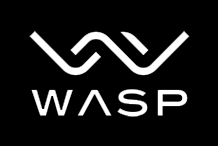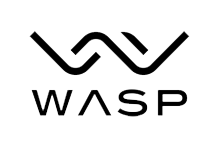
Part 1: Portfolio
This six-part series that is centered around aspects of hiring a mobile app developer, begins with the first installment explaining what to look for in the portfolio of a quality app designer.
Finding the best mobile application developer to suit your company’s needs is not an easy process. Even more difficult is entrusting a developer with your vision for a successful mobile app. Doing so requires tons of faith that they will not only bring your vision to life, but also contribute to the success of the future app.
An easy way you can begin building trust with a potential developer is by taking a look through their portfolio of past clients, and seeing if there are any projects similar to what you want to develop.
The Importance of an App Developer’s Portfolio
Why is reviewing developer portfolios so important you might ask? It is actually quite simple. Would you rather hire “Developer A” who has the lowest bid, can churn out the finished product quicker, but lacks in interest and experience for your project or “Developer B” who may cost more, take longer to create a quality product and is not only generally interested in the project, but has experience doing similar projects as well. If you chose “Developer B”, you are on the right track and here’s why.
A developer that has experience with projects similar to yours would not only be helpful in the development process, but any suggestions they may have could assist with the success of the app.
Gauging an App Developer’s Portfolio
Obviously a developer may have completed projects that are in no feasible way similar to the project you’re presenting them. All you have to do is browse through their past pieces of work and locate ones that are somewhat similar to the goals you are trying to accomplish. As you begin to search through various mobile app developer portfolios, keep the following elements in mind before coming to a decision.
Measure Quality
Analyze quality of mobile apps the developer has worked on previously. Upon first seeing their compilation of past projects, deciding whether or not to move forward with a developer should be quite easy. If the developer’s previous apps meet standards that you would like to implement in your future app, continue pressing forward, scouting out other aspects of the developer’s completed work.
Common Functionality
Knowing whether or not projects in the app developer’s portfolio have similar functionality to the app you would like to create, is essential in deciding on the right developer. How will you know if they will be able to build an app with the functionality you envisioned if they have never done anything like it before? If the portfolio continues to look promising, move forward to the next element of a quality developer portfolio.
Data & Reviews
The final thing you need to take away from a potential developer’s portfolio is the download data as well as user reviews. Download data and user reviews will shed some light on a couple of things; how much exposure was received (download data) and quality of the developer’s work (user reviews).
Select the Best Portfolio & Move Forward
After weeding out the portfolios that don’t meet your expectations, make an informed decision on the best remaining developer portfolios. Although, before you make that decision and continue on to discuss cost and anything else associated with the development of your app, determine the developers level of interest in the project. Choose whoever has had experience with similar projects, visible through their portfolio, and shows a genuine level of interest in taking your app from an idea to something you can physically look at.
To Summarize
When looking for someone to develop your “million dollar app”, don’t just hire any Joe off the street. You need someone with a proven history of developing quality mobile applications that uses the necessary functionality to make the app successful as well as provide historical download data backed up by praise visible through user reviews.
6 Essential Aspects of Hiring a Mobile App Developer:
Part 1: Portfolio

